A Tale of Three Cornbreads
Every time I tear into a pan of cornbread… that smell wafts in to the air and I am transported back to my grandmother’s kitchen.
Sean Brock
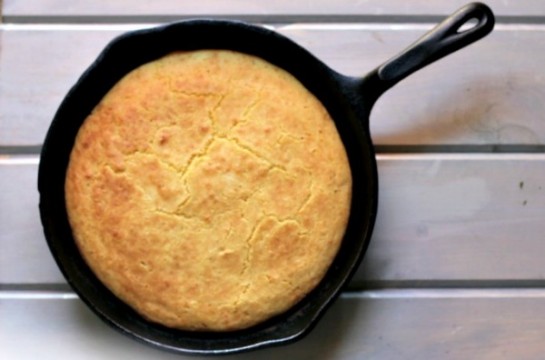
Cornbread has for centuries soothed the soul and nourished the body of southerners. As cooks and materials have changed, so have recipes. With the help of our two interns, Kensie Gaspard and Zoe Sorenson, we spent one Saturday morning stirring up three versions that illustrate the transition of cornbread from the simple combinations of water and cornmeal to deluxe models incorporating bleached flour and refined sugar. Each reflects a particular moment in the history of eating in the South. (Recipes follow.)
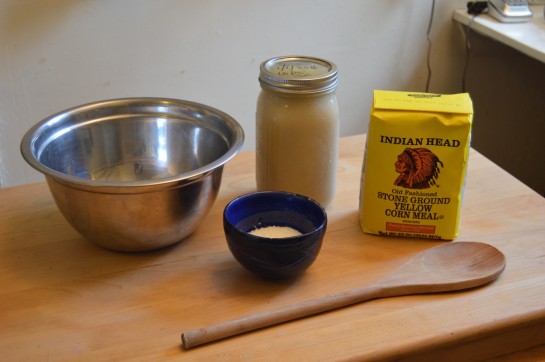
In the beginning, there was hoecake. We began our baking with this most ancient and basic example made from four simple ingredients: water, cornmeal, fat and salt. The Native Americans who invented corn as a crop also gave us hundreds of ways to cook it including this example. Hoecake can be fried as well as baked and is also known as corn pone, johnnycake, ash cake, and even dog bread. Versions of this bread have been eaten in the South for over a thousand years, and it is credited with saving the Europeans from starvation.
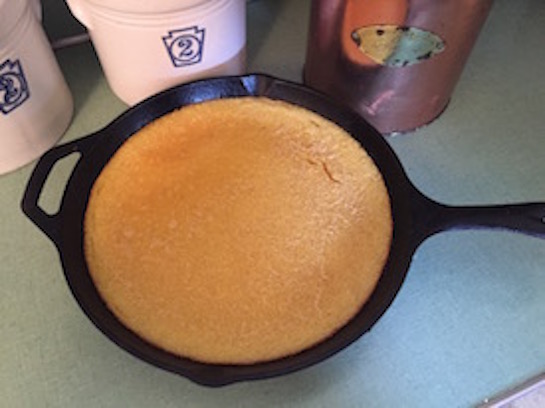
Our version of hoecake is adapted from the The Spirit of the Harvest: North American Indian Cooking by Beverly Cox and Martin Jacobs. Chewy and dense, it is delicious with blackberry jam.
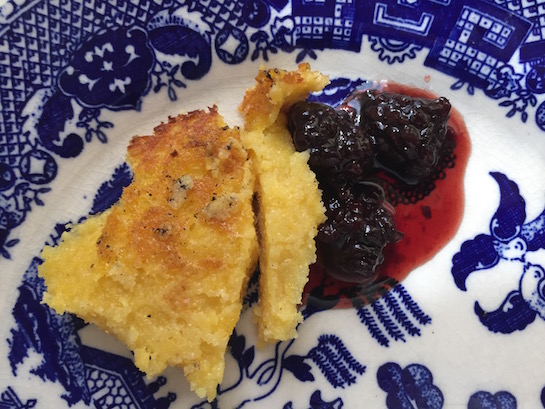
Our second cornbread reflects the melding of European and Native cultures as the newcomers moved from being a “people of wheat” to a “people of corn.” Once Europeans introduced domestic animals into the landscape, eggs and milk were incorporated into the traditional Indian cornbread along with leavening agents such as baking soda and powder.  The recipe we used relies completely on cornmeal, reflecting the scarcity and expense of European wheat flour in southern society. (This cornbread makes Chef Sean Brock go all woozy. You can watch Ronni Lundy make Brock’s favorite version here.)
The recipe we used relies completely on cornmeal, reflecting the scarcity and expense of European wheat flour in southern society. (This cornbread makes Chef Sean Brock go all woozy. You can watch Ronni Lundy make Brock’s favorite version here.)
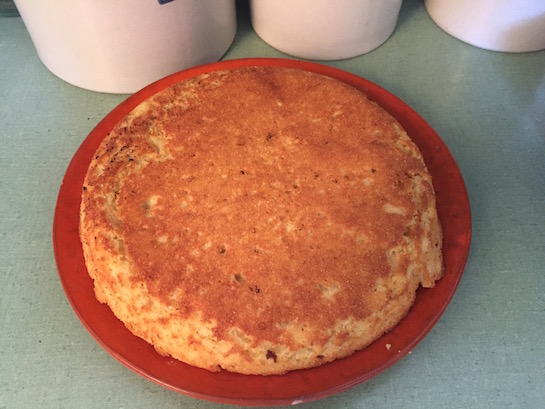
Cornbread number three, well over a hundred years old, reflects the modernization of the southern food system in the late nineteenth and early twentieth century. The industrial revolution made luxury items such as refined sugar and white flour, plentiful and cheap. Cooks began incorporating these into cornbread and the recipes became part of the cornbread pantheon. We turned to Adrien Miller’s excellent history, Soul Food:The Surprising Story of an American Cuisine One Plate at a Time for this lovely rendition of “Minnie Utsey’s “Never Fail” Cornbread” a rich and satisfying delight.
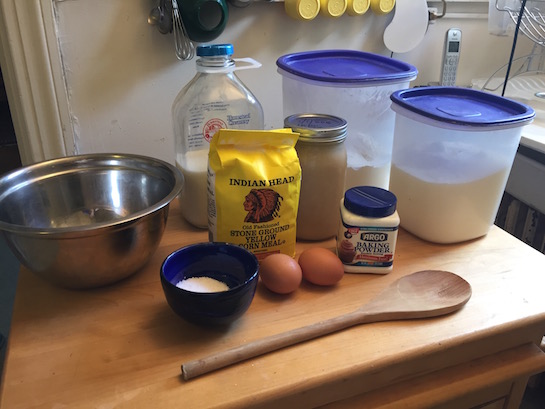
While the addition of sugar and flour can raise hackles, the simple truth is some folks prefer their cornbread lighter and sweeter. Despite protestations from cornbread puritans, many of the traditional cooks we have talked to—black, white and Indian—advise putting a spoonful of sugar in whatever cornbread you make “to help it brown.”
Recipes:
Hoecakes
adapted from
The Spirit of the Harvest: North American Indian Cooking by Beverly Cox and Martin Jacobs
2 cups water
2 cups cornmeal
2 teaspoons salt
2 tablespoons lard
Preheat oven to 375 degrees F. Bring water to boil in a saucepan. Stir in cornmeal, salt, lard. Place in a greased 8-inch cast iron skillet and bake for 20-25 minutes. Cut into wedges and serve.
Serves 6 to 8.
Ronni Lundy’s No Sugar, No Flour Cornbread
adapted from Shuck Beans, Stack Cakes, and Honest Fried Chicken: The Heart and Soul of Southern Country Kitchens
4 tablespoons drippings (such as bacon)
2 cups finely ground white cornmeal
1 teaspoon salt
1/2 teaspoon baking soda
1 large egg
1 1/2 cups buttermilk
Directions
Preheat the oven to 450 degrees. Put the drippings in a 9-inch cast iron skillet. Place the skillet in the oven and let the drippings heat while you prepare the batter. In a big bowl, mix the cornmeal, salt, and baking soda. Add the egg and buttermilk, and stir until just blended. The drippings should be good and hot, but not smoking, by now. Carefully remove the skillet from the oven and swirl gently to coat it with drippings. Pour the rest of the drippings into the batter. It should crackle and pop. Mix quickly and lightly, just to blend, then pour the batter into the skillet and put it back in the oven. Bake 20 to 25 minutes, until the bread is set in the middle, the edges are browned, and the top crust is golden. Serve hot, cut into wedges and lifted straight out of the skillet. If you prefer, turn the skillet upside down and let the cornbread slip out on a big plate. If your cast-iron is seasoned well, it will do so easily.
Minnie Utsey’s “Never Fail” Cornbread
adapted from Soul Food:The Surprising Story of an American Cuisine One Plate at a Time
by Adrien Miller
1 cup all purpose flour
1/4 cup sugar
4 teaspoons Baking Powder
3/4 teaspoon salt
1 1/4 cups coarse yellow cornmeal
2 large eggs
1 cup milk
1/4 cup vegetable shortening, melted and cooled
1. Preheat oven to 425 degrees F. Grease an 8 inch cast iron skillet.
2. Whisk together dry ingredients. In a small bowl, whisk together eggs, milk, and shortening until smooth. Pour egg mixture into dry ingredients and stir. Pour the batter into the prepared baking pan.
3. Bake until firm and the top is golden brown, 20-25 minutes. Serve hot.













